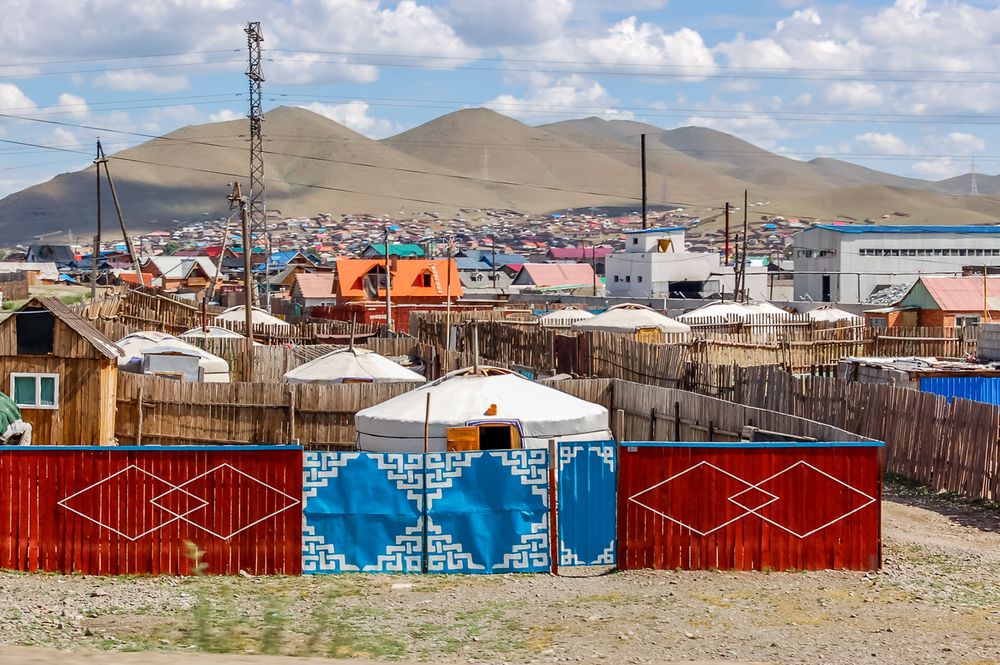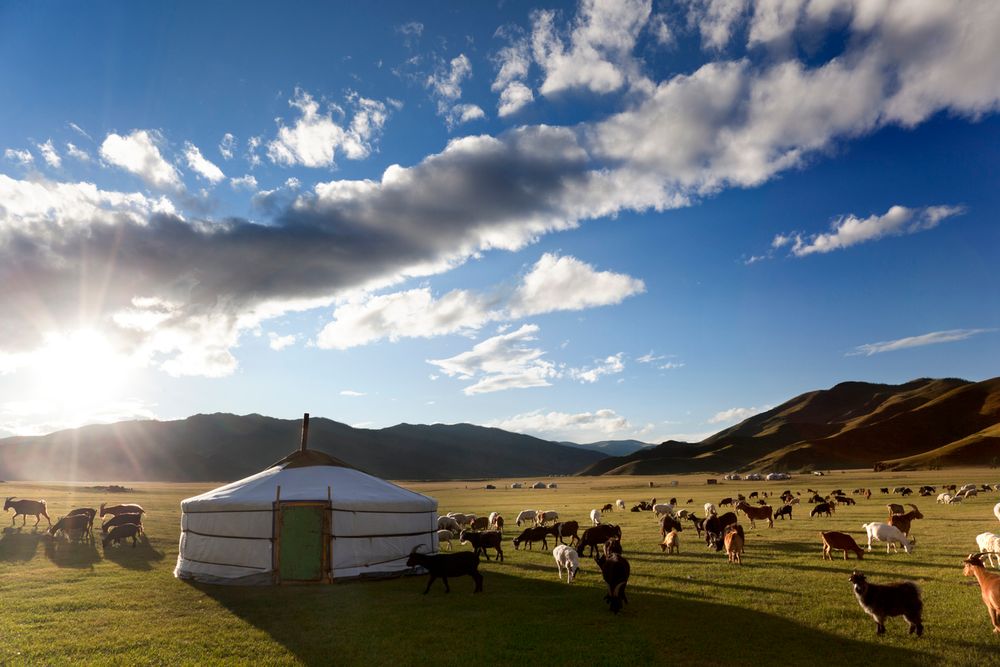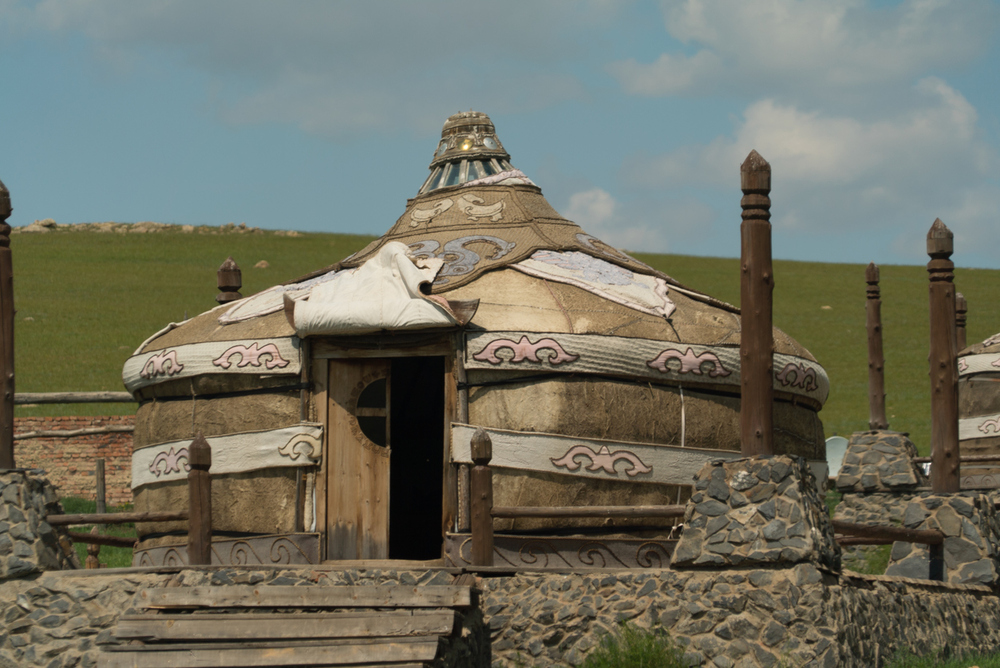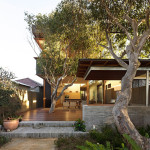Tiny homes of all varieties are becoming increasingly popular, but have you ever considered living in a yurt house?
View in gallery
The homes that once belonged to ancient Mongolian nomadic tribes are now being modernized and turned into more permanent accommodation. If you’ve ever thought about ditching the cluttered and materialistic lifestyle humans now live, then why not downsize and live in a yurt?
In this article, we will go over some of the benefits of living in a yurt and yurt building kits that can get you on your way to your minimalist and budget-friendly new life.
What Is a Yurt?
View in gallery
Before we begin, it’s essential to understand the yurt and where it came from. Yurts have an extremely long history dating back over 8,000 years.
Mongolian tribes were nomadic, meaning they regularly upped and moved their homes throughout the year. This need to be constantly on the move inspired the traditional Mongolian yurts. Essentially, they needed a home that they could dismantle and place on the back of animals to chosen destinations throughout Eurasia. And thus, the traditional Mongolian yurts were born.
Shape
View in gallery
As the Eurasian Steppe experiences different weather conditions, it was important for the Mongolians to create a home that could withstand the elements.
The shape of their traditional house was the first thing they had to think about due to the high wind speeds on the Eurasian Steppe. These high wind speeds would knock over a regular square or rectangular style house, so the Mongolians made their homes a circular shape.
Size
View in gallery
A yurt house can be a range of different sizes and ultimately would come down to the number of dwellers living inside. There are smaller-sized yurts for small families and larger ones that can even house up to fifteen people.
A tiny house can sometimes feel cramped and claustrophobic, but that isn’t the case with a yurt. Once you add the roof to the lattice walls of the yurt, you have more than enough room to stand comfortably. Typically, a yurt will have six-foot walls with an extra three feet added on by the roof.
Materials
View in gallery
Materials were also an essential factor to consider. Although they may seem temporary, these homes were the Mongolians’ permanent dwellings; therefore, they needed to be sturdy, weatherproof, and durable.
Ancient dwellers traditionally lived in a wooden yurt, where the interior walls were woven together using animal hair or leather. This woven wood would make up the lattice effect walls of the wooden yurt, which they then covered with fabric.
The fabrics the nomads would cover them with were usually animal hide or wool felt. Wool felt was a favored fabric because it acted as a fantastic insulator against the freezing temperatures during winter.
A wooden yurt also helps with the portability of this type of dwelling.
What Are the Benefits of Living in a Yurt?
View in gallery
Now that we’ve gone over a brief history of the yurt, let’s get into the benefits of living in one. We have also gone into more information about yurts, their origin, and how you can use them in your space over on What is a Yurt? – A Guide to the Ancient Mongolian Shelter.
Mobility
View in gallery
One of the biggest benefits of a yurt is that it isn’t permanent, and you aren’t stuck in one space for the long haul. Granted, you can get yurts with more permanent structures, but they’re extremely easy to dismantle and move for the most part.
If you’re the type of person who doesn’t like being tied to one place, then a yurt gives you the freedom to relocate wherever and whenever you please.
Environmentally Friendly
View in gallery
Now more than ever, it is crucial to be saving the environment. For example, the circular structure of a yurt doesn’t just protect it against high winds, but it also maximizes the interior square footage with the limited materials used.
As there are very few building materials that go into constructing a yurt, it makes them a lot better for the planet than a traditional home.
Cost-Effective
View in gallery
If you’ve ever looked at buying a home, then you’ll know how utterly ridiculous the housing market is. Modern yurts are incredibly cost-effective, coming in at a fraction of the price of a traditional brick home.
Modern Yurts Encourage a Minimalist LifeStyle
View in gallery
Humans have become extremely materialistic, cluttering our lives with unnecessary items, gadgets, furniture, and clothing. Unfortunately, downsizing to a yurt also means downsizing everything that doesn’t serve a purpose in your life.
Many people have enjoyed taking on the minimalist lifestyle by moving into tiny houses. In my opinion, our lives would be a lot less stressful if we all took a leaf out of this book.
Fabric Yurt vs. Wooden Yurt
View in gallery
Throughout history, nomads built their yurts with wood and topped them with fabric. These wooden yurts were structured and sturdy as they were the dweller’s permanent homes. Nowadays, companies have created fabric yurts that resemble a tent.
Similar to a tent, these yurts consist of fabric walls that you fasten to the ground using rope pegs. Although they are far easier to dismantle, move, and put up again, they were designed for camping purposes and not so much as permanent housing.
8 Yurt Building Kits
View in gallery
If you’ve come this far, you’re probably interested in knowing some yurt kits and yurt builders who can help you on your way to your minimalist yurt life dreams. Here are eight yurt building kits that you can set up in a matter of hours.
Blue Ridge Yurts

The woman-owned Virginia company, Blue Ridge Yurts, provides custom wooden yurts in a range of sizes, materials, and fabrics.
When purchasing your yurt kit, you can decide between vinyl or glass windows, 7′ or 10′ walls, and 27 colored wall fabrics to make it as suited to all your wants and needs.
Their upgrade to the 10’ yurt walls allows for a fully liveable yurt loft space which most other companies can’t provide. And don’t worry, if you aren’t any good at DIY, the company can complete the installation process for you.
Colorado Yurt Company

The Colorado Yurt Company adapted the traditional Mongolian yurt and added a dome skylight. The skylight helps to increase the amount of natural light throughout the yurt’s interior.
As with many yurt kits on the market, you can choose to customize your yurt with a lifter dome to improve airflow, big nets and shade cloths, and even insulation for both cold and hot weather.
Freedom Yurt Cabins

Freedom Yurt Cabins put a spin on the traditional Mongolian yurt and replaced the fabric walls with solid walls. As fabric walls require regular maintenance and can damage over time, the solid wall yurt offers longtime durability that you can still assemble in a matter of hours.
Because the solid wall yurt is more like your average home, they feature insulation, integrated flooring, and standard house windows.
Pacific Yurts

Pacific Yurts is one of the most popular yurt companies throughout America. They were the very first modern yurt company in the world and have continued to produce incredible structures as both vacation rentals and permanent homes.
The standard yurts from Pacific Yurts include clear vinyl windows, dome skylights, and solid wood doors, but you can also upgrade to add on additional features such as gutter systems, roof insulation, and snow and wind kits.
Rainer Outdoor Yurt

Rainer Outdoor Yurt uses an extremely thick wall lattice to give its yurts a more stable structure than some of its competitors.
They offer customizable features and modern comforts such as plumbing, heating, and electricity. You can even add on room partitions, kitchens, and bathrooms to make the tiny house feel like a real home.
Shelter Design Yurts

The Montana yurt company, Shelter Design Yurts, has two yurt models, the Big Sky Yurt and the Eco Yurt.
The Big Sky Yurt can range from 12′ to 40′ and comes with standard features of 7’2″ lattice walls, an insulated door, clear removable vinyl windows, and a clear dome skylight.
Their Eco Yurt, however, is smaller but uses lodgepole strategically thinned from a regenerating forest. Using wood of this type helps to cut down on their ecological footprint. The Eco Yurt has the same features as the Big Sky Yurt, just slightly smaller and better for the environment.
Smiling Wood Yurt

The Smiling Wood Yurt company went along the wooden wall yurt route and created 8′ cedar walled yurts with thermal windows, galvanized metal roofs, and triple-pane skylights.
Smiling Wood designed these yurts to be a more permanent structure than some others on the list. The standard package includes the walls that are already equipped with the door and windows, a roof kit with an installed skylight dome, and installation instructions to help you get your yurt up and running in no time.
Yurt House: Our Final Thoughts
We understand that yurt homes aren’t for everyone, but we have to admit, they’re a fantastic tiny home option. As house prices continue to rise, we wonder if we’ll be seeing more of these modernized ancient Mongolian homes popping up throughout the world.
As we finish up with the idea of a yurt home, we’d love to know your opinions. Would you be open to living in one? Do you think you could cut down your belongings and take on the minimalist lifestyle? Let us know in the comment section down below!




My first question is, why is there no dateline for this article?
I would have no problem living in a permanent yurt. It’s what I’d be able to afford. I still have to find some land first.